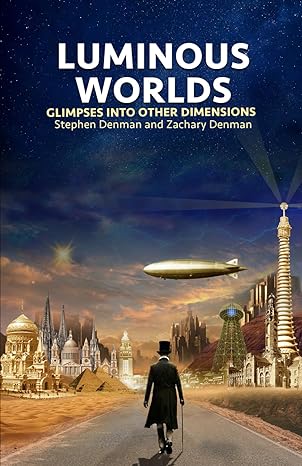Contstruction of the Great Wall Of China
With astute efficiency, King Zhou Xuan, of the Western Zhou Dynasty in Eastern Central China, began the construction of the initial Great Wall of China on the 15th October 794 BC. This was done to protect the Western Zhou Kingdom against incursions by the Scythian Aryans, Turkic Peoples, Mongolian Tribes, but mostly against the feuding caused by the Zhou Monarchy itself and nearby Chinese Warlords. Further construction along the Great Wall of China happened during the reign of Emperor Tuoba Taoji or Emperor Taiwu of Northern Wei, in North China. Hence, on the 7th August 423 AD, the Great Wall of China started to be practically upgraded.
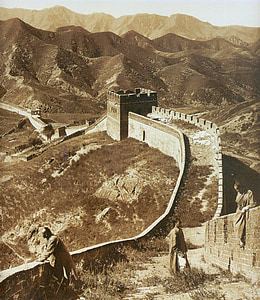 Emperor Tuoba Xiaowu or Yuán Xiaowu of the Běiwèi Wángguó (Northern Equal Kingdom) or the Northern Wei, began to construct numerous Chinese Walls as fortifications on the 18th January 536 AD, as much battling and conflict had started to ensue among the Imperial Dynasties, across parts of Northern China. Many individuals also knew the Běiwèi Wángguó (Northern Equal Kingdom) or the Northern Wei, by the names of the Tuòbáwèi Wángguó (Great Needy Equal Kingdom), and the Yuánwèi Wángguó (Round Equal Kingdom), and the Hòuwèi Wángguó (Later Equal Kingdom).
Emperor Tuoba Xiaowu or Yuán Xiaowu of the Běiwèi Wángguó (Northern Equal Kingdom) or the Northern Wei, began to construct numerous Chinese Walls as fortifications on the 18th January 536 AD, as much battling and conflict had started to ensue among the Imperial Dynasties, across parts of Northern China. Many individuals also knew the Běiwèi Wángguó (Northern Equal Kingdom) or the Northern Wei, by the names of the Tuòbáwèi Wángguó (Great Needy Equal Kingdom), and the Yuánwèi Wángguó (Round Equal Kingdom), and the Hòuwèi Wángguó (Later Equal Kingdom).
Marco Polo Travelled the Silk Road
During the years when the famous Italian Merchant and explorer from the Venetian Republic, in North Eastern Italy, known as Marco Polo, travelled into Mainland China and elsewhere on the Asian Continent, he actually produced the first map of Great Tartaria. Marco Polo travelled around the Asian Continent from the 13th April 1292 to the 18th April 1292. Additionally, Marco Polo travelled along the Silk Road from the 15th October 1271 until the 14th August 1295. After this, Marco Polo then returned to the Venetia Republic of North Eastern Italy. This means he would evidently have seen the vast buildings of Great Tartaria during his travels across Eastern Asia and Central Asia. However, Marco Polo never observed the Great Wall of China as the construction of it only began on the 16th April 1372.
Marco Polo had some incredible travels, and every aspect of his adventures were fully recorded in a manuscript that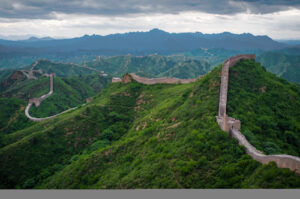 was called The Book Of The Marvels Of The World (1302). However, the document was actually written by the Italian Romance Novelist known as Rustichello Santuccio Collazo Da Pisa, who most also knew as Rusticiano Santuccio Collazo. He originated from the cityscape of the Etruscans, known as Pisa, which is located in the Tuscany Region of Central Italy. The book was written in the Italian Language, and the manuscript is called Il Milione (The Million), which was the name Macro Polo used to describe his pursuits. However, in the English Language the manuscript was called The Travels Of Marco Polo (1302). The document was initially called the Livre Des Merveilles Du Monde (Book Of The Wonders Of The World) or Devisement Du Monde (Enjoyment Of The World).
was called The Book Of The Marvels Of The World (1302). However, the document was actually written by the Italian Romance Novelist known as Rustichello Santuccio Collazo Da Pisa, who most also knew as Rusticiano Santuccio Collazo. He originated from the cityscape of the Etruscans, known as Pisa, which is located in the Tuscany Region of Central Italy. The book was written in the Italian Language, and the manuscript is called Il Milione (The Million), which was the name Macro Polo used to describe his pursuits. However, in the English Language the manuscript was called The Travels Of Marco Polo (1302). The document was initially called the Livre Des Merveilles Du Monde (Book Of The Wonders Of The World) or Devisement Du Monde (Enjoyment Of The World).
When Marco Polo wrote an extensive and detailed narrative of the Asian Continent from 1271 AD to 1295 AD, he did not even mention the Great Wall of China or Great Wall of Tartaria, but that was likely because the version which tourists observe today was not constructed until the Ming Dynasty ruled Mainland China. Hence, the Great Wall of China or Great Wall of Tartaria was constructed from the 16th April 1372 to the 28th October 1625, initially by the Hongwu Emperor called Zhu Yuanzhang and Chu Yuanchang, who most knew as Taizu of Ming. Additionally, there are no maps which display the Great Wall of China or Great Wall of Tartaria, before the 23rd February 1584.
Click to watch full video on Youtube
The Great Tartaria Timelines have been altered
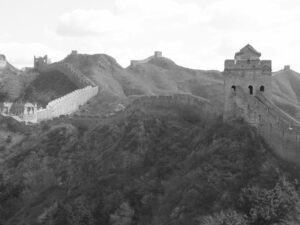 The famous Russian Revolutionary and Russian Polymath called Nikolai Aleksandrovich Morozov, discerned that many of the Jesuit Priests from the Roman Catholic Church (RCC) and Vatican City State, had deliberately altered timelines when it came to Great Tartaria and Northern Russia. Apparently, when it came to the Great Wall of China or the Great Wall of Tartaria, Nikolai Aleksandrovich Morozov was concerned that intentional distortions had been propagated by the Roman Catholic Church (RCC) and Vatican City State against Imperial Russia and Soviet Russia, and therefore, Great Tartaria. Seemingly, the alterations of specific timeline had been stored in the Archivum Secretum Vaticanum (Prophecy Secret Archive) or Vatican Secret Archive, which is now called the Archivum Apostolicum Vaticanum (Prophecy Messenger Related Archive) or Vatican Apostolic Archive.
The famous Russian Revolutionary and Russian Polymath called Nikolai Aleksandrovich Morozov, discerned that many of the Jesuit Priests from the Roman Catholic Church (RCC) and Vatican City State, had deliberately altered timelines when it came to Great Tartaria and Northern Russia. Apparently, when it came to the Great Wall of China or the Great Wall of Tartaria, Nikolai Aleksandrovich Morozov was concerned that intentional distortions had been propagated by the Roman Catholic Church (RCC) and Vatican City State against Imperial Russia and Soviet Russia, and therefore, Great Tartaria. Seemingly, the alterations of specific timeline had been stored in the Archivum Secretum Vaticanum (Prophecy Secret Archive) or Vatican Secret Archive, which is now called the Archivum Apostolicum Vaticanum (Prophecy Messenger Related Archive) or Vatican Apostolic Archive.
Great Wall of China
Because the famous Great Wall of China, has a contiguous height of 19.7 feet (6.0 M) to 23.1 feet (7.0 M), and a thickness of 9.8 feet (3.0 M), and extends for 13,170 miles (21,196 KM), the notion that such a vast fortified edifice was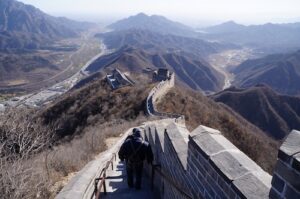 initially constructed in 246 BC by the Emperor Qin Shi Huang, and was then finished only after 1,871 years, by 1625 AD, is utterly ridiculous. Indeed, the Great Wall of China or Great Wall of Tartaria follows the boundary of Mainland China, how would the Dynastic Chinese have known where the exact borderline of Mainland China actually was from 246 BC and onward? The very important Treaty of Nerchinsk of 1689 was signed by the Tsardom of Russia and the Qing Dynasty of Mainland China. It formally identified the exact borders of Imperial Russia and Dynastic China. The Treaty of Nerchinsk was signed on the 27th August 1689, in the town of Nerchinsk, in the Zabaykalsky Krai, of South Eastern Russia. Both of the signatories were apparently the Royal Minister known as Suoetu Heseri and Songgotu Heseri, on behalf of the Kangxi Emperor called Aisin-Gioro Xuanye and Bogdykhan Kangxi, and Count Fyodor Alexeyevich Golovin on behalf of the Russian Tsar called Pyotr Alekseyevich Romanov, who many knew as Peter The First and Peter The Great, and his own half-brother, the Russian Tsar called Ivan Alekseyevich Romanov and Ivan The Fifth. Wherefore, the most recently upgraded version of the Great Wall of China or the Great Wall of Tartaria, was built to function as the boundary that delineated Great Tartaria, and more specifically, Chinese Tartary and Oriental Tartaria, from the landmass of Dynastic China.
initially constructed in 246 BC by the Emperor Qin Shi Huang, and was then finished only after 1,871 years, by 1625 AD, is utterly ridiculous. Indeed, the Great Wall of China or Great Wall of Tartaria follows the boundary of Mainland China, how would the Dynastic Chinese have known where the exact borderline of Mainland China actually was from 246 BC and onward? The very important Treaty of Nerchinsk of 1689 was signed by the Tsardom of Russia and the Qing Dynasty of Mainland China. It formally identified the exact borders of Imperial Russia and Dynastic China. The Treaty of Nerchinsk was signed on the 27th August 1689, in the town of Nerchinsk, in the Zabaykalsky Krai, of South Eastern Russia. Both of the signatories were apparently the Royal Minister known as Suoetu Heseri and Songgotu Heseri, on behalf of the Kangxi Emperor called Aisin-Gioro Xuanye and Bogdykhan Kangxi, and Count Fyodor Alexeyevich Golovin on behalf of the Russian Tsar called Pyotr Alekseyevich Romanov, who many knew as Peter The First and Peter The Great, and his own half-brother, the Russian Tsar called Ivan Alekseyevich Romanov and Ivan The Fifth. Wherefore, the most recently upgraded version of the Great Wall of China or the Great Wall of Tartaria, was built to function as the boundary that delineated Great Tartaria, and more specifically, Chinese Tartary and Oriental Tartaria, from the landmass of Dynastic China.


